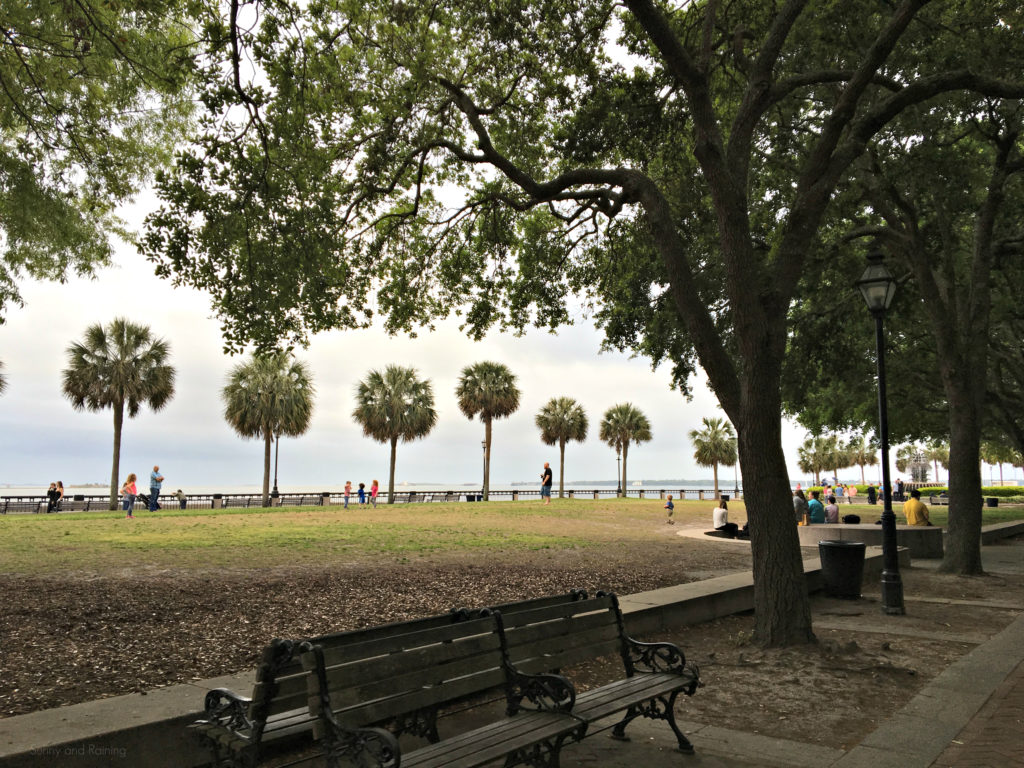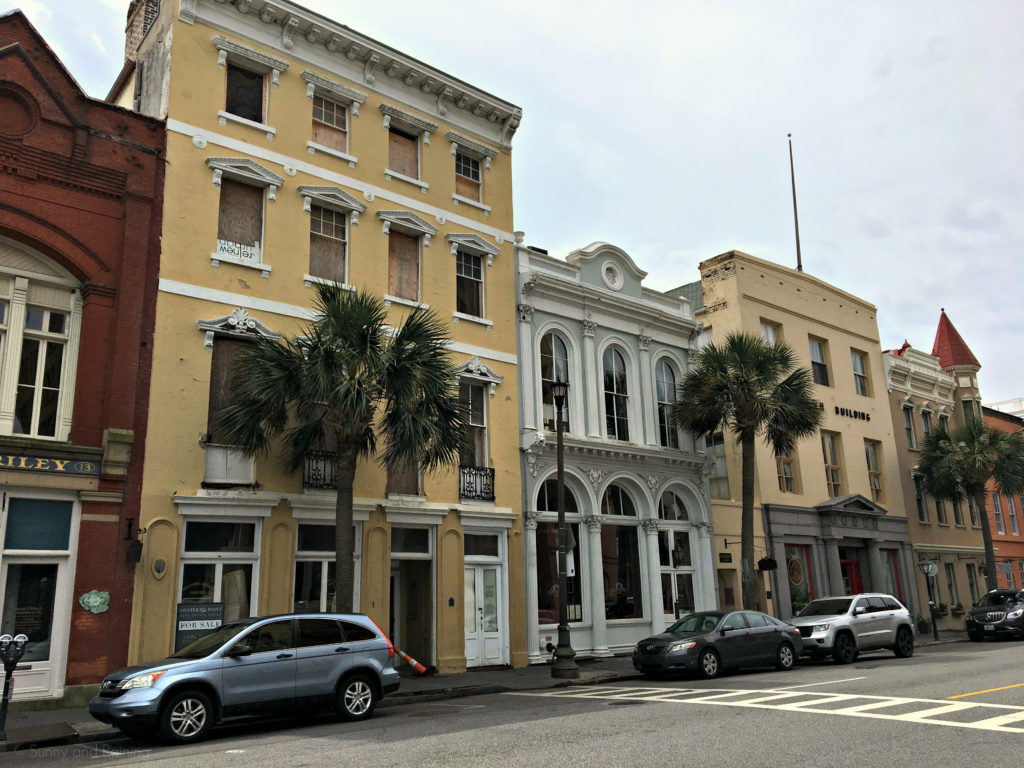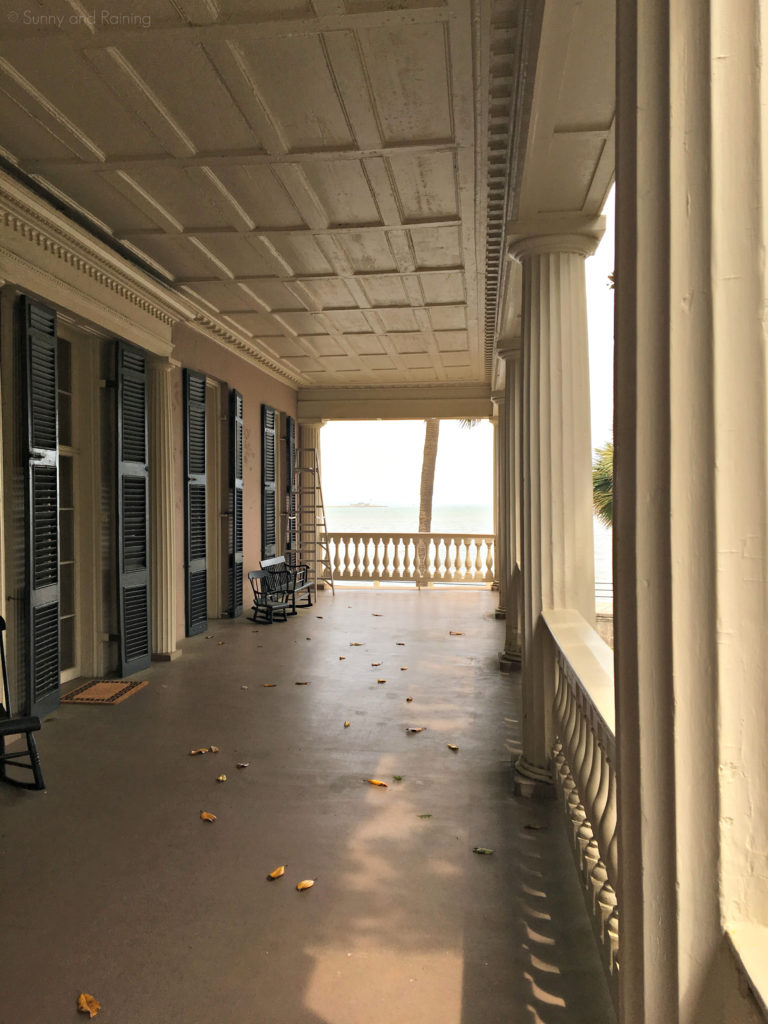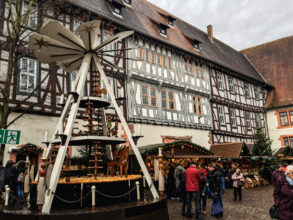T: Some of our trips are meticulously and cautiously planned and watched. Will there be enough seats? What happens if the flight fills up? What’s our backup? How’s the weather? The what-ifs can go on and on.
Other trips are impulsive and reckless demands for adventure, usually after several weeks of bad weather or stress at work.
Charleston was mostly the latter.
It required a short overnight stay in Atlanta along the way, and required a whole lot of luck to get home after Minneapolis-St Paul withstood the 12th-largest snowstorm on record, canceling most of Saturday’s flight schedule. But that didn’t take away from one of our best trips we’ve ever taken.
. . .
E: Charleston, South Carolina is the absolute perfect blend of history, adventure and the best food I’ve ever eaten in my life.
It all started when we parked our rental car near Folly Beach and strolled around the block. We had only just arrived in the Charleston area about an hour ago, and our first stop had to be lunch. We were too hungry to be picky — but as soon as we stepped inside Black Magic Cafe, we knew we hit the jackpot. It’s a cute little restaurant with a beachy, coffee shop vibe. Let me tell you. “Magic” is an understatement.
We found two seats at a table and our eyes darted from one menu item to the next. How were we supposed to choose? Breakfast? Lunch? Brunch? Obviously we chose brunch.
I had the chicken and waffles and Tim had the chicken fried biscuit. I know that just sounds like every other southern meal, but it was by far the best brunch I’ve ever eaten.
. . .
E: For two Minnesotans that had been cooped up inside for the past few months, we knew we had to find some place near Charleston with sun and sand. Folly Beach is only about a half hour drive from the Charleston airport, and offers plenty to see and do for an afternoon.
We spent the majority of our time walking up and down the shoreline, taking in the fresh air and watching kite surfers in the distance. There’s a beautiful pier that stretches hundreds of feet into the ocean.
After basking in the sunshine for a few hours, we walked along the pier, ice cream cones in hand, and let the wind cool us down. That’s all I really need in life — a chocolate ice cream cone, summer weather and a beach. (And Tim, of course.)
We still hadn’t even seen Charleston yet, but it was already the most perfect day.


T: Usually we tend to find more economical places to stay on our trips, but for this trip, we decided to splurge. We stayed downtown at the Embassy Suites Charleston Historic District, a renovation of the former South Carolina State Arsenal, constructed in 1829 and converted to a hotel in 1994. It originally boasted a five story open air atrium but the hotel developers added a roof.
The building itself is woven into the fabric of the Historic District, overlooking Marion Square. It’s steps away from some of the most beautiful streets and, of course, churches, in town.
The usual Embassy Suites amenities apply here, with free breakfast in the morning (with a beautiful courtyard to enjoy it in) as well as a happy hour in the early evening with some snacks and drinks.
. . .
E: By the time we arrived back into town from Folly Beach, it was late afternoon and the sun was getting ready to set. After stopping by the hotel, we strolled around the city’s charming, winding streets and stopped at the famous Pineapple Fountain. The fountain has been around since 1990 and sits inside Charleston’s beautiful waterfront park.
Rainbow Row isn’t far from the fountain and features 13 row houses of all different colors. We stood across the street taking it all in. I’m not sure I’d like living inside one of Charleston’s most photographed homes, but they sure were picturesque.
By now it was suppertime, and we decided on Craftsmen Kitchen & Tap House. There are so many restaurants in town, and this one did not disappoint. We ate on the patio, which was technically inside the restaurant in a courtyard area.
It was here that we had the best bacon ever. (Seriously, ever.) Though it was just sitting atop my chicken sandwich, it was easily the star of the meal. I’d go back to Charleston just to eat that bacon.
T: Yeah, we need to talk about this bacon.
I am somewhat of a bacon nut, so when Elizabeth ordered a sandwich with bacon on it, I had to try it for myself.
Thick cut, perfectly seared. Absolute perfection.
There were some great dishes here, along with an eclectic beer selection. It made for a really nice evening.
(Side note: As we were writing this article, we discovered that this restaurant actually closed its doors. How they managed to close with bacon as good as theirs — we’ll never know.)
E: We sat on the patio for a long time, just chatting and taking in the nice, warm weather we’d missed so much. And as we walked back to our hotel, we stumbled upon the Historical Charleston City Market, a quintessential city market that stretches several blocks in long, narrow, historic sections in the middle of Market Street. In between two of the buildings, there was a man playing tunes on his guitar. I’m not sure there was anything particularly special about him or the music he was playing, but a small crowd gathered around him.
“Let’s stay for one more song,” I kept saying to Tim.
And we stayed for a few more — taking in the acoustic music on a warm evening in lovely Charleston.



T: To understand Charleston’s history is impossible without understanding the history of the South, the horrific slave trade and ultimately the Civil War. In some ways all of the Historic District is a relic of this part of our nation’s dark past and it’s important to remember that.
I’m no history buff but I was keen on visiting Fort Sumter, an essential and iconic monument. Fort Sumter is a tiny island at the mouth of the harbor that was built to protect the Charleston Harbor going back as far as the War of 1812, and withstood the first shots fired during the Civil War.
Today, Fort Sumter National Monument is accessible by tour boat from South Carolina Aquarium several times a day. The fort has been rebuilt and restored to mimic roughly what it may have looked like in 1860, with a small museum of narratives and artifacts from the fort’s history, particularly the Battle of Fort Sumter itself. It’s not much to see overall, but it marks a crucial point in our history and is definitely worth visiting. The short boat ride out there also provides a unique perspective of Charleston and the harbor.
. . .
T: Sunday, we continued our long embrace of our inner foodies after returning from Fort Sumter. The Historic District is awash with amazing food and experiences, and we found both at 5Church, a church-turned-restaurant with some brilliant takes on classic brunch items and some great mimosas in a bright, contemporary, irreverent makeover of a 1916 church (Church of the Redeemer).
We spent the afternoon strolling down several streets, meandering our way past endless 18th Century homes in pristine condition. Eventually, after travel blog after travel blog recommended a mansion tour, we stopped inside the Edmonston-Alston House for a tour. Like many of the mansions in the southern tip of the peninsula, this house dates to the early 1800s (1828), built by a wealthy merchant named Charles Edmonston. A decade later, it was sold to Charles Alston and has remained in the Alston family ever since. It was the site of many gatherings, dinners and parties for the wealthy. General Beauregard of the Confederate Army watched from the Alston house porch as Fort Sumter was bombarded in 1861, and even Robert E. Lee spent the night here during the War. The tour was pretty well done and a good way to get out of the hot sun for a little while.
E: Touring the mansion by the beach offered a little insight as to what life might have been like back in the 1800s. My favorite part about the houses in Charleston is that each has a side porch. They’re all unique and beautiful, and the mansion’s large porch offered gorgeous views of the water. We stood out there in the wind, and I couldn’t help think that if I lived in that house, I’d spend every minute on that porch.
Our group consisted of about eight to 10 people, and of course two of them had ties to Minnesota. So we spent 10 minutes or so bonding over snowstorm stories and how nice it was to be escaping a big snowy blizzard back home.



E: Later that evening, it was time for some barbecue.
Back home in North Dakota (or at least where I grew up), when we said we were having barbecues for supper, that meant seasoned ground beef, served on a bun — a “sloppy joe” as many others call it.
So by the time I got to college and I heard people say they were going to a barbecue or having some barbecue, I really assumed they were making or eating a big batch of barbecues. Apparently you can also call a grill a barbecue?
Here’s the conversation a handful of years ago that made me really rethink barbecues.
“What are we going to eat?”
“Barbecues.”
“Barbecue what?”
“We’re having barbecues?”
“But what are we going to barbecue?”
Though I’m still working out the details, I learned later in life that “barbecue” can mean a lot of different things, and Charleston does it the best.
We ate at a little place called Smoke BBQ, and wow.
T: A lot of places say they have the best barbecue, but for me, all of those places are in South Carolina.
Besides bacon, another thing I get snobby about is barbecue — specifically, pulled pork. Smoke BBQ was just around the corner from our hotel — a logistical plus since a line of severe storms was about to roll through. But it was more than just a convenient spot. As the rain poured down outside, we capped off our foodie weekend with some solid pulled pork and chicken. And we walked out smelling like a meat smoker, a true sign of some good barbecue.
. . .
E: On the last day of any trip, part of our evening always involves trying to find ways to nonrev home. Sometimes open seats can be a little hard to come by, but we usually never have to connect more than once, if at all.
As soon as we started looking at our options, we knew trying to make it back to Minnesota was going to be an absolute disaster. The snowstorm threw quite the wrench into our plans of making it home. As MSP had Saturday’s schedule almost entirely wiped out, the next several days looked real ugly.
The direct flights were all oversold, and we were dozens and dozens of people deep on the standby list.
We arrived at the Charleston airport early Monday morning expecting to spend all day connecting through multiple airports after making the jump up to Atlanta.
All I really wanted was to make it back home to St. Paul before midnight. That’s the thing about nonrevving. You do always have to be all right with some level of stress and uncertainty, but sometimes that level can quickly jump out of your comfort zone.
With really nowhere else to go, we decided to try the impossible. We waited at the game for one of the direct flights from Atlanta.
T: I have a lot of axioms about nonrevving, but they basically all boil down to this: Sometimes, you just gotta try the flight. And on this day, somehow, some way, it worked out. On our second try, we made it on and got home before dark — back to the frozen wasteland of Minnesota in February.
I trudged out to the car to shovel it out of the 16” of snow that fell in our absence. But you know, I don’t really remember much of that part. My mind was stuck on warm, happy, barbecue-y thoughts.

When we went: Mid-April 2018
Where we stayed: Embassy Suites Charleston Historic District
How long we stayed: Three nights (Two nights in Charleston, one night in Atlanta)
What we wish we knew before we went: There’s so much to see and do in Charleston and it’s worth spending more than a weekend.



